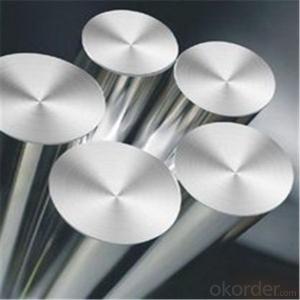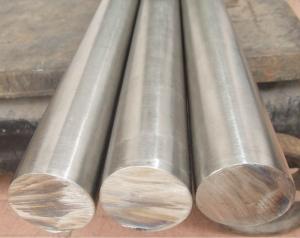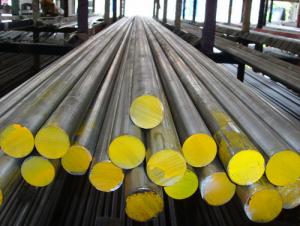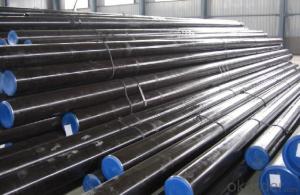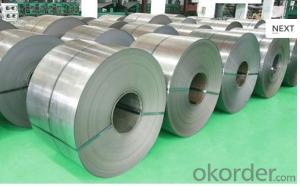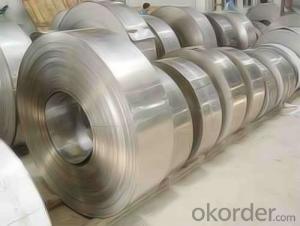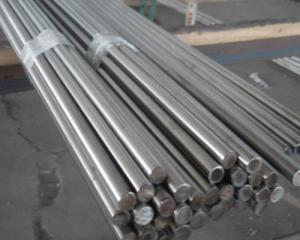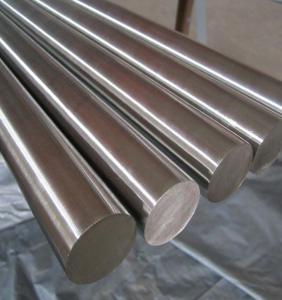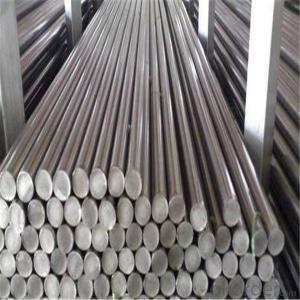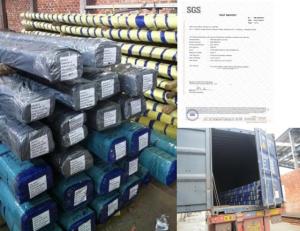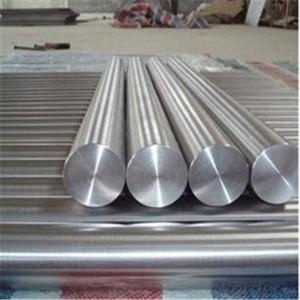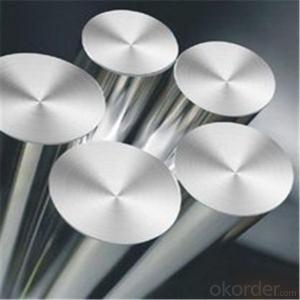316 Stainless Steel Round Bar Price Per kg
- Loading Port:
- Shanghai
- Payment Terms:
- TT OR LC
- Min Order Qty:
- 2 m.t.
- Supply Capability:
- 20000 m.t./month
OKorder Service Pledge
OKorder Financial Service
You Might Also Like
Item specifice
1.Specifications
Stainless steel is a production which not easy rust, acid resistance and corrosion resistance, so it is widely used in light industry, heavy industry, daily necessities and the decoration industry. As a professional manufacturer, we can manufacture various sizes of stainless steel bars with highest quality and lowest price.
1) Size: 5mm-600mm*6000mm
2) Length: 6m or According to client's requirement .
3) Origin: Shanxi China
4) Payment term: L/C, T/T
5) MOQ: 500KGS
6) Hardness: Hard, half hard, soft, according to customer's request.
7) Packing: Standard seaworthy packing(plastic&wooden) or according to the customer's requests.
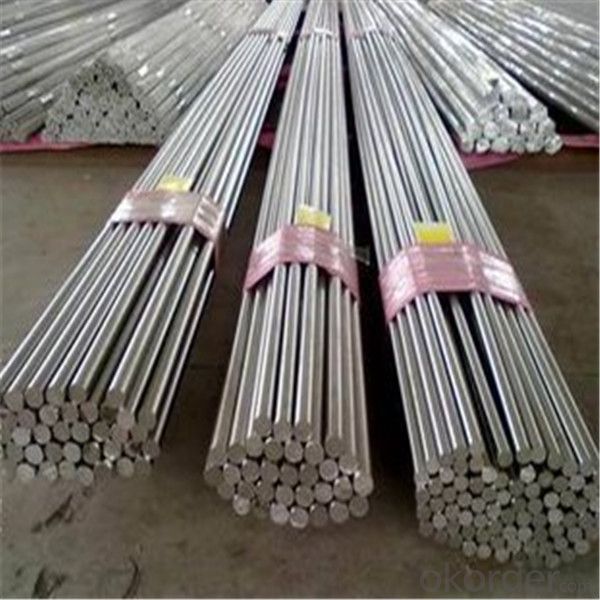

8) Detailed specification
| Surface | Black, peeled, bright, polish/satin, etc. |
| Technique | Forged/Hot Rolled/Cold Drawn |
| Category | 1. Round bar 1)Hot rolled black bar: (5-600)x6000mm or according to your requirement 2)Acid round bar: (5-600)x6000mm or according to your requirement 3)Cold drawn bright bar: (1-200)x6000mm or according to your requirement 4)Polishing round bar: (5-600)x6000mm or according to your requests |
| 2. Square bar 1)Hot rolled black bar: (5*5-600*600)x6000mm or according to your requests 2)Acid square bar: (5*5-600*600)x6000mm or according to your requests 3)Cold drawn square bar: (1*1-100*100)x6000mm or according to your requests 4)Polishing square bar: (5*5-600*600)x6000mm or according to your requests | |
| 3. Flat bar 1)Hot rolled flat bar: (3-30)*(10-400mm)*6000mm or according to your requests 2)Cold drawn flat bar: (3-30)*(10-400mm)*6000mm or according to your requests | |
| 4. Hexagon bar 1)Hot rolled hexagon bar: (5-300)x6000mm or according to your requests 2) Acid hexagon bar: (5-300)x6000mm or according to your requests 3)Cold drawn hexagon bar: (1-200)x6000mm or according to your requests t 4)Polishing hexagon bar: (5-600)x6000mm or according to your requests | |
| 5. Channel bar 1)Hot rolled channel bar: (5-100)x6000mm or according to your requests 2)Acid channel bar: (5-100)x6000mm or according to your requests 3)Cold drawn channel bar: (1-100)x6000mm or according to your requests | |
| 6. Threaded bar 1)Hot rolled threaded bar: (5-100)x6000mm or according to your requests 2)Acid threaded bar: (5-100)x6000mm or according to your requests 3)Cold drawn threaded bar: (1-100)x6000mm or according to your requests | |
| 7. Angle bar 1)Hot rolled angle bar: (16-200)x(16-200)x(3-18)x(3000-9000)mm or according to your requests 2)Acid angle bar: (16-200)x(16-200)x(3-18)x(3000-9000)mm or according to your requests 3)Cold drawn angle bar: (16-200)x(16-200)x(3-18)x(3000-9000)mm or according to your requests | |
| Diameter± | ± 2% tolerance can reach the industry standard |
| Quality | Our production equipment 24 hours of continuous temperature work, to ensure the unity of the product roundness, elongation, tensile strength and yield strength. Welcome customers to our company to detect the products before shipment. For the customers who are not inconvenient, quality assurance can be laid down in the contract, we will take charge of the returning and shipping fee if there is any problems of the product quality, so it will dismiss any of your worry about our products. |
| Package | Standard seaworthy packing(plastic& wooden) or according to the customer' s requests |
| Delivery time | 7-20days, according to the quantity |
| Productivity | 1500 tons/month |
| Remarks | OEM/Sample/Mixed item/Factory visit are welcome |
- Q:Are stainless steel bars suitable for wastewater treatment facilities?
- Stainless steel bars are incredibly well-suited for wastewater treatment facilities. The corrosion resistance properties of stainless steel make it perfect for environments abundant in moisture and chemicals, like those typically found in wastewater treatment facilities. Stainless steel can endure the corrosive impact of different wastewater components, including acids, alkalis, and organic compounds, which can gradually deteriorate other materials. Moreover, stainless steel bars are long-lasting, hygienic, and simple to clean, guaranteeing enduring performance and upholding the necessary sanitary standards in wastewater treatment facilities.
- Q:What are the different types of tests performed on stainless steel bars?
- There are several types of tests performed on stainless steel bars, including tensile strength tests, hardness tests, chemical composition analysis, visual inspections, dimensional measurements, and corrosion resistance tests. These tests ensure that the stainless steel bars meet the required standards and specifications for their intended applications.
- Q:What's the price of 202 stainless steel round bar?
- In practical application, the steel which is often corroded by weak corrosive medium is called stainless steel, and the steel which is resistant to chemical medium is called acid resisting steel. Because of the difference in chemical composition between the two, the former is not necessarily resistant to chemical medium corrosion, while the latter is generally stainless. The corrosion resistance of stainless steel depends on the alloying elements contained in the steel
- Q:How do you determine the size and length of a stainless steel bar?
- To determine the size and length of a stainless steel bar, you can follow a few simple steps. 1. Measure the diameter: Use a caliper or a ruler to measure the diameter of the stainless steel bar. Ensure that you measure at the widest point of the bar, as stainless steel bars can have varying dimensions along their length. 2. Measure the length: Use a measuring tape or a ruler to determine the length of the stainless steel bar. Make sure to measure from one end to the other, excluding any threaded or chamfered portions if applicable. 3. Check the specifications: If you have access to the manufacturer's specifications or product information, you can refer to those to determine the size and length of the stainless steel bar. These specifications often provide precise details about the dimensions and tolerances of the bar. 4. Consult a professional or reference guide: If you are unsure about how to accurately measure or determine the size and length of a stainless steel bar, it is always advisable to consult a professional or refer to a reliable reference guide. They can provide guidance and assistance in accurately determining the dimensions of the bar. Remember, stainless steel bars can come in various shapes and forms, such as round bars, square bars, or hexagonal bars. The measuring technique may slightly differ based on the specific shape of the bar, but the above steps should generally help you determine the size and length of a stainless steel bar.
- Q:Are stainless steel bars suitable for escalator handrails?
- Yes, stainless steel bars are suitable for escalator handrails. Stainless steel is known for its durability, strength, and resistance to corrosion, making it an ideal material for escalator handrails that are constantly exposed to heavy usage and environmental factors. Stainless steel is also easy to clean and maintain, ensuring a hygienic surface for users. Additionally, stainless steel bars can be designed with various finishes and textures to provide a comfortable and secure grip for escalator passengers. Overall, stainless steel bars are a reliable and suitable choice for escalator handrails.
- Q:What are the different types of stainless steel bars used in mining equipment?
- There are several different types of stainless steel bars that are commonly used in mining equipment due to their exceptional properties and durability. These types include: 1. Austenitic stainless steel bars: Austenitic stainless steel, such as grade 304 or 316, is widely used in mining equipment due to its excellent corrosion resistance and high strength. It can withstand harsh environmental conditions, including exposure to chemicals, acids, and saltwater. 2. Martensitic stainless steel bars: Martensitic stainless steel, like grade 410 or 420, is known for its high hardness and strength. It is often used in mining equipment that requires resistance to abrasion and impacts. Martensitic stainless steel bars are commonly used in applications such as crusher jaws, hammers, and wear plates. 3. Duplex stainless steel bars: Duplex stainless steel, such as grade 2205, offers a combination of high strength and excellent corrosion resistance. It is particularly suitable for mining equipment that operates in aggressive and corrosive environments. Duplex stainless steel bars are commonly used in pump shafts, valves, and other critical components. 4. Precipitation-hardening stainless steel bars: Precipitation-hardening stainless steel, such as grade 17-4 PH or 15-5 PH, is used in mining equipment that requires high strength and toughness. These stainless steels can be heat treated to achieve the desired mechanical properties. They are commonly used in conveyor systems, drill bits, and other heavy-duty mining equipment. 5. Ferritic stainless steel bars: Ferritic stainless steel, like grade 430, offers good corrosion resistance and high-temperature strength. Although it is not as strong as austenitic or martensitic stainless steel, it is still used in certain mining equipment applications, such as screens, grates, and sieves. It is important to select the appropriate type of stainless steel bar for mining equipment based on the specific requirements and conditions of the mining operation. Factors such as corrosion resistance, strength, hardness, and impact resistance should be considered to ensure optimal performance and longevity of the equipment.
- Q:How are stainless steel bars priced?
- Stainless steel bars are priced based on several factors. Firstly, the grade or quality of the stainless steel plays a significant role in determining the price. Higher-grade stainless steel bars, such as those made from 316 or 304 stainless steel, are generally more expensive due to their superior corrosion resistance and durability. The dimensions and size of the stainless steel bars also impact the pricing. Longer and thicker bars tend to be more costly as they require more raw material and manufacturing processes. Additionally, specialized shapes or customized cuts may incur additional costs. Market demand and supply dynamics also influence the pricing of stainless steel bars. Fluctuations in raw material costs, availability, and overall demand for stainless steel products can lead to price variations. Economic conditions, global trade policies, and geopolitical factors can also impact stainless steel bar prices. Furthermore, the price of stainless steel bars is influenced by the supplier or distributor. Different suppliers may have varying pricing strategies, overhead costs, and profit margins, which can result in different prices for the same product. Lastly, it is important to consider any additional costs such as transportation, packaging, or taxes that may be included in the final pricing of stainless steel bars. Overall, stainless steel bar prices are determined by the grade, size, market conditions, supplier factors, and additional costs associated with the product.
- Q:What is the difference between stainless steel bars and stainless steel beams?
- The main difference between stainless steel bars and stainless steel beams lies in their shape and usage. Stainless steel bars are solid, cylindrical shapes available in various dimensions and are primarily used for construction, industrial, and decorative purposes. On the other hand, stainless steel beams have a specific I or H shape and are commonly used for structural support in buildings, bridges, and other heavy-duty applications. Beams provide greater strength and load-bearing capacity compared to bars, making them suitable for larger-scale projects.
- Q:What are the different types of stainless steel bar profiles?
- There exists a variety of stainless steel bar profiles, each possessing its own distinctive characteristics and applications. Some of the frequently encountered types include: 1. Round Bars: These boast a circular cross-section, rendering them highly versatile for deployment in construction, engineering, and manufacturing. 2. Square Bars: As the name suggests, square bars feature a square cross-section and are commonly utilized in architectural, decorative, and machinery manufacturing endeavors. 3. Hexagonal Bars: Exhibiting a hexagonal cross-section, hexagonal bars provide exceptional strength and stability, making them ideal for applications necessitating precise angles and edges, such as the aerospace and automotive industries. 4. Flat Bars: Flat bars possess a rectangular cross-section, characterized by a smooth, even surface. They are widely employed in construction and manufacturing, particularly in the fabrication of frames, braces, and supports. 5. Angle Bars: Angle bars are distinguished by their L-shaped cross-section, wherein two equal-length legs form a 90-degree angle. They are commonly utilized in construction for structural support and framing purposes, as well as in machinery and equipment manufacturing. 6. T-Bars: T-bars assume a T-shaped cross-section, featuring one elongated leg and a shorter crossbar. They find frequent application in construction, architecture, and machinery and equipment manufacturing. 7. Half Round Bars: Half round bars adopt a semi-circular cross-section and are often employed for decorative intentions, such as handrails and trimmings. It is essential to recognize that these represent merely a selection of the most prevalent stainless steel bar profiles, as there may exist additional specialized profiles catering to specific applications. The selection of a profile hinges upon factors such as the intended purpose, strength requirements, and aesthetic considerations.
- Q:What are the differences between 304 and 316 stainless steel bars?
- 304 and 316 stainless steel bars are both widely used in various industries, but they have distinct differences that make them suitable for specific applications. Firstly, the primary difference between 304 and 316 stainless steel bars lies in their composition. 304 stainless steel is composed of 18% chromium and 8% nickel, while 316 stainless steel contains 16% chromium, 10% nickel, and 2% molybdenum. This additional molybdenum in 316 stainless steel provides increased resistance to corrosion and pitting compared to 304 stainless steel. Secondly, due to its higher molybdenum content, 316 stainless steel bars have superior overall corrosion resistance, making them ideal for use in marine environments or applications where exposure to chloride solutions or corrosive chemicals is common. On the other hand, while 304 stainless steel bars offer good corrosion resistance, they may not be as resistant as 316 stainless steel in certain aggressive or high-chloride environments. Thirdly, the difference in composition affects the mechanical properties of the two stainless steel grades. 316 stainless steel bars have higher tensile strength and yield strength compared to 304 stainless steel bars. This makes 316 stainless steel bars more suitable for applications that require greater strength and durability, such as structural components or heavy-duty equipment. Lastly, the cost difference between 304 and 316 stainless steel bars should also be considered. Due to its higher molybdenum content and improved corrosion resistance, 316 stainless steel bars are generally more expensive than 304 stainless steel bars. Therefore, the choice between the two grades will also depend on the budget and specific requirements of the project or application. In summary, the key differences between 304 and 316 stainless steel bars lie in their composition, corrosion resistance, mechanical properties, and cost. Understanding these differences is crucial in selecting the appropriate stainless steel grade for a particular application, ensuring optimal performance and longevity.
1. Manufacturer Overview |
|
|---|---|
| Location | |
| Year Established | |
| Annual Output Value | |
| Main Markets | |
| Company Certifications | |
2. Manufacturer Certificates |
|
|---|---|
| a) Certification Name | |
| Range | |
| Reference | |
| Validity Period | |
3. Manufacturer Capability |
|
|---|---|
| a)Trade Capacity | |
| Nearest Port | |
| Export Percentage | |
| No.of Employees in Trade Department | |
| Language Spoken: | |
| b)Factory Information | |
| Factory Size: | |
| No. of Production Lines | |
| Contract Manufacturing | |
| Product Price Range | |
Send your message to us
316 Stainless Steel Round Bar Price Per kg
- Loading Port:
- Shanghai
- Payment Terms:
- TT OR LC
- Min Order Qty:
- 2 m.t.
- Supply Capability:
- 20000 m.t./month
OKorder Service Pledge
OKorder Financial Service
Similar products
New products
Hot products
Hot Searches
Related keywords
